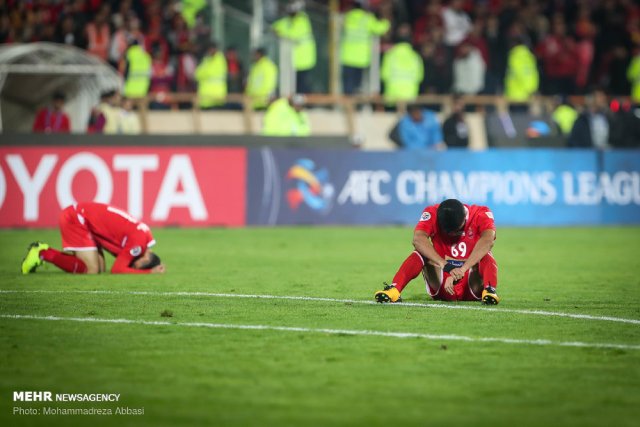The Persian version of this article has printed in “Goal” daily, Dated: Monday, November 11, 2018.
For These Few Reasons
Persepolis Shouldn’t Have Been Asia’s Champion
Vahid Namazi
Where Persepolis was halted was right behind the gates of history! A history that remains uncertain in how it can be repeated or rekindled with renewed determination. But such is the way of history: it is unkind to the weaker and quicker to favor those who strive harder and better. Our emotions tell us that Persepolis deserved to be Asia’s champion, but reason and logic have their own arguments for dismissing those feelings.
For several years, Iranian football has risen to become Asia’s top-ranked team in FIFA standings due to its result-oriented approach in matches against opponents. However, even non-football fans can clearly discern the differences between Iranian and Japanese football. After professionalizing their football, Japan devised a 40-year plan to win the World Cup. Laugh if you will, but it’s no joke. Their journey began in 1998, and since then, they haven’t missed a single World Cup, advancing from the group stage every other tournament. But what has Iranian football done? What plan have we devised to face the future? …
Persepolis was founded in 1942, Kashima Antlers in 1947. Compare the path we’ve taken over these decades with the one the Japanese have followed. Visit Kashima’s website and look at the list of their twelve sponsors to grasp the difference. Which Iranian club can transparently publish its annual profit-and-loss statement without the usual obfuscation of expenses and revenues (if such a statement even exists)? Which Iranian club owns a dedicated, AFC-standard stadium (not UEFA or FIFA standards, mind you)?
Iran’s football league is labeled “professional,” just like Japan’s J League. According to a report by The Japan Times on February 9, 2017, the previous season’s champion of the Japanese league received a prize of 13.5 million dollars (2 billion yen), paid over three years. In addition to the awards given to the second- and third-place teams, all 18 teams in the Japanese league received nearly 3 million dollars each at the end of the season. These prizes were part of the league’s 2 billion dollar revenue from television and digital broadcasting rights. For a moment, forget the champion’s prize — multiply the 3 million dollars each Japanese league team received by Iran’s exchange rate of 14,000 tomans per dollar. The result is 42 billion tomans — the minimum share for one season in Japan’s professional league. What is the brand value of Iran’s football league? How are the revenues from broadcasting matches and related events calculated, earned, and spent? The answer is still unclear.
It’s been twenty-eight years since the legendary Zico first stepped onto the pitch in Kashima Antlers’ jersey. Look into which prominent footballers have joined the J League over the past three decades, bringing championships and revenue. Who has been the biggest foreign footballer in Iranian football in the last thirty years? Why have players like Forlán, Fernando Torres, Dunga, Podolski, and Andrés Iniesta ended up in Japan, where their aging legs and labored breaths have elevated the league’s quality and financial value? Quality is never accidental. The Japanese have worked hard for their football, devised plans, stood by them, and toiled relentlessly to achieve them—and now they reap the rewards.
Losing is always bitter. But it’s possible to lose without being a loser. And now, Iranian football has a team that embodies “not being a loser,” regardless of the match result or the surrounding noise. This is the greatest achievement of “Branco’s Persepolis” this season. Its weary soldiers, battered and empty-handed, bid farewell to the trophy like fearless warriors ambushed by the enemy’s army. They are disappointed but never broken. And life goes on…

